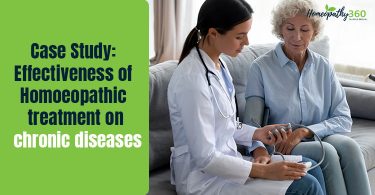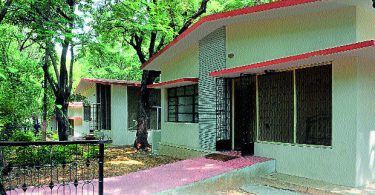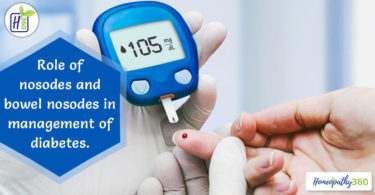Abstract:
Warts are extra growth of epidermal layer of skin which are benign in nature. Around 10% of world’s population is suffering from warts of different types. In school children it is 10-20% and it is common in immunocompromised patients & meat handling individuals1.Dr. Samuel Hahnemann mentioned about warts as manifestation of sycotic miasm or fig wart disease, and its line of treatment in his book, Chronic Diseases The peculiar Nature and their Homoeopathic Cure. This article discuss about the aetiology & clinical features of warts, and the remedies which can be used effectively to cure it..
Keywords:
Verucca vulgaris, Human Papilloma Virus (HPV), Homoeopathy, Excrescences, Constitution, Condylomata.
Introduction:
Warts are epidermal neoplasms which are benign in nature (some are malignant) and it usually confined to epidermis. It is the viral infection of keratinocytes. The causative organism is Human Papilloma Virus (HPV)2i. There are more than 150 genotypically different HPVs identified. Most common among them are HPVs 1, 2, 4, 27, 57. It infects the keratinocytes of epidermis results in hyperkeratinisation and epidermal thickening3. Infection spread by autoinoculation or by direct contact. Indirectly from fomites, swimming pools, bathrooms4i. Location of infection other than skin are mouth, oesophagus, larynx, trachea & conjunctiva.
Histologically, common viral warts present with hyperplasia of stratum Malpighi with vacuolated cells, papillary folds, keratohyaline granules, hyperkeratosis, elongated rete ridges, koilocytosis.
Different types of warts are:
1. Verruca vulgaris: It is also known as Common warts. They are characterised by single or multiple, firm, fleshy coloured, dome shaped, circumscribed lesions with hyperkeratotic dry surface stippled with black dots due to thrombosed capillaries. Its commonly seen in trauma prone sites. E.g.: Dorsum of hands and feet, knees. Virus responsible are HPV 1, 2, 275i.
2.Filliform or Digitate warts: Finger like flesh coloured projections from a narrow or broad base. Common locations are mouth, beard, eyes, ala nasi, face, scalp and neck.
3.Flat warts or Plane warts: Its seen around mouth, dorsum of hands, forehead, shaved areas. It is pink, light brown or yellow in colour and slightly elevated flat topped papules. Its size vary from 0.1 to 0.5 cm. Causative virus are HPV 3 & 102ii.
4. Plantar warts: Seen in soles at the points of maximum pressure. Cluster of many warts fused to form mosaic warts2iii.
5. Epidermodysplasia verruciformis: It is a rare autosomal recessive inherited disorder, which is malignant potential when photoexposed. Its characterised by defective cell mediated immunity to HPV 3, 5, 8. Two types of epidermodysplasia verruciformis present are:
1.Plane wart like, which is confluent on face and acral part
2.Pitiriasis versicolor like lesions, irregular scaly macules on trunk.
In healthy individuals, most of them resolve spontaneously, that is, 30% of cases in 6 months and 60% in 1 year5ii. Viral activity will be purely based on the immune status of the patient. The presence of DNA of the virus can be detected by nested polymerase chain reaction and hybridization. One who is previously infected has a higher risk for the development of new warts, than those who never got infection4ii.
Therapeutics
1.Calcarea carbonica
Warts seen in face & hands. Adapted to person with increased perspiration, both local and general. Mentally and physically exhausted people due to overwork. Aversion to meat8, dislikes fat, disagrees milk. Craves eggs, sweets, salt and indigestible things. Scrofulous, hydrogenoid, chlorotic, youthful ones, thermal state chilly.
2.Causticum
Old warts on nose, eyebrows, face, nails and fleshy tips of fingers6i. Large pedunculated8 uneven rough surface, which bleeds easily. Small warts all over the body. Adapted to persons with dark hair, rigid fibre, weakly psoric with excessively yellow, sallow complexion, subject to affections of respiratory and urinary tracts. Thermal state chilly.
3.Dulcamara
Warts on face, hands, palmar surface of hands, back of fingers which are smooth, nearly transparent, coming in crop6ii, large and fleshy. Adapted to persons of scrofulous phlegmatic constitutions, restless, irritable, working on cold damp basement or milk diary. Burning thirst for cold drinks whose thermal state is chilly.
4.Lycopodium
Split and furrowed warts surrounded by a herpetic aureola with bran like desquamation. Adapted to persons with digestive or urinary disturbances. Symptoms run from right to left. Lymphatic constitution, uric acid diathesis. Craves everything warm. Desire sweets, aversion to bread, cannot eat oysters. Thermal state hot, who likes to eat and drink hot.
5.Natrium muriaticum
Old warts with cutting pains. Numerous warts on hands and fingers in anaemic chlorotic girls with pale scanty, irregular menstruation, gastralgia and constipation. Anaemic, nervous palpitations of overgrown boys with numerous warts on hands6iii. Craves salt and salty things. Aversion to bread, oyesters, fats. Thermal state hot.
6.Natrium sulphuricum
Knotty wart like eruptions on anus between abdomen and thighs. Red warty lumps throughout the body. Condylomata, soft fleshy excresences, greenish discharges, sycotic excrescences. Ailments from dampness of weather, damp houses or cellars.
7.Nitricum acidum
Moist warts like cauliflower, hard, rhagadic or in thin pellicles, often emitting a foetid humor and bleeding when touched. It acts well on dark complexioned people and people who get aggravation of complaints from exposure to water and cold damp weather, slim people with rigid muscle, black hair and eyes. Sycotic remedy. Craves chalk, earth etc. Exuberant granulations.
8.Rhus toxicodendron
Warts on fingers and hands with a broad fleshy face, upper part horny, rough knotty with a thickened epidermis, not sensitive, forming a grey or black crust, which falls off and healthy skin is underneath. Thermal state chilly.
9.Sepia officinalis
Horny excresences in centre, small, flat, hard and itching warts on hands and face6iv. It acts best on brunnets.
10.Thuja occidentalis
Broad conical warts, easily splitting from their age on their surface. Condylomata, sycosis.
Wart like excrescences upon mucous and cutaneous surfaces, fig warts. Warts, epithelioma, eruptions only on covered parts. Persons of hydrogenoid constitution.
General aggravations from heat of bed and cold damp weather.
Conclusion
Wart is a common condition occurring among general population, caused due to Human papilloma virus which can be managed effectively with homoeopathic medicines by constitutional approach. In its treatment we should make sure that the miasm underlying is sycotic only and if it is complicated with other miasms, first we should prescribe an antipsoric and then antisycotic remedy, with giving due time to act the remedies11.
References
1.Al Aboud AM, Nigam PK. Wart (Plantar, Verruca Vulgaris, Verrucae). InStatPearls [Internet] 2017 Nov 27. StatPearls Publishing.
2.Habif TP. Clinical Dermatology E-Book: A Color Guide to Diagnosis and Therapy. Elsevier Health Sciences; 2015 Apr 23.
3. Zaman H. Warts and verrucas: assessment and treatment. Suicide. 2019 Mar 19;14:20.
4. Lipke MM. An armamentarium of wart treatments. Clinical medicine & research. 2006 Dec 1;4(4):2273-93.
5.Khanna N. Illustrated Synopsis of Dermatology & Sexually Transmitted Diseases-E-book. Elsevier Health Sciences; 2014 Feb 10.
6.Samuel L. Homoeopathic therapeutics. B. Jain publishers Pvt Ltd New Delhi. 2001:110-2.
7.Boericke W. Pocket Manual of Homoeopathic Materia Medica & Repertory: Comprising of the Characteristic and Guiding Symptoms of All Remedies (clinical and Pahtogenetic [sic]) Including Indian Drugs. B. Jain publishers; 2002.
8. Allen HC. Keynotes and Characteristics with Comparaisons, of Some of the Leading Remedies of the Materia Medica. Boericke et Tafel; 1899.
9. Mohan H. Textbook of pathology. Jaypee Brothers, Medical Publishers Pvt. Limited; 2018 Nov 30.
10.Hahnemann S. The chronic diseases: their peculiar nature and their homœopathic cure. C. Ringer & Company; 1896.





